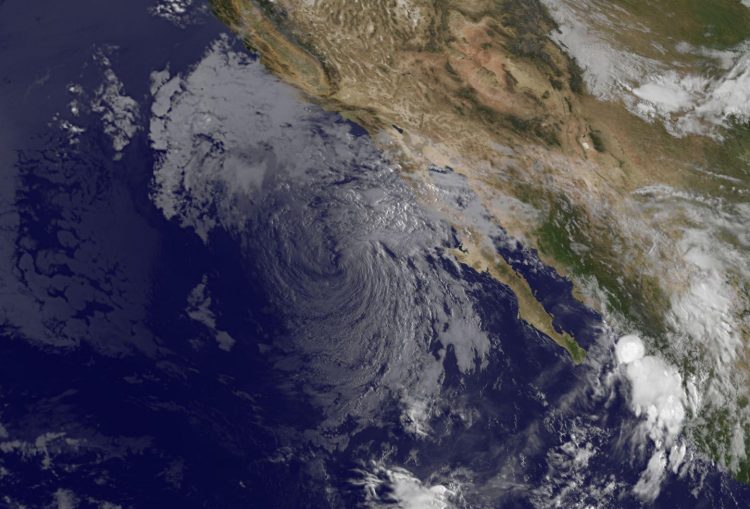Remnants of ex-Tropical Storm Linda spreading inland

This image of the remnants of Tropical Storm Linda was taken from NOAA's GOES-West satellite on Sept. 11 at 10:15 a.m. EDT and showed the eastern side its associated clouds over the northern Baja peninsula. Credits: NASA/NOAA GOES Project
An image of the remnants of Tropical Storm Linda was taken from NOAA's GOES-West satellite on Sept. 11 at 10:15 a.m. EDT and showed the eastern side its associated clouds over the northern Baja peninsula.
The last advisory issued on Linda from the National Hurricane Center came on September 10 at 2100 UTC (5 p.m. EDT). At that time, Post-tropical cyclone Linda was located near 26.0 North and 118.6 West, about 260 nautical miles west-southwest of Punta Eugenia, Mexico and moving northwest at 6 knots. Maximum sustained winds were near 40 knots at the time. The NHC noted that Linda had ceased to qualify as a tropical cyclone.
By September 11 at 1005 UTC (7:05 a.m. EDT), Linda's remnants were centered near
26.5 North latitude and 119.5 West longitude. Winds of 20 to 30 knots were still occurring up to 150 nautical miles northeast of the center and out to 90 nautical miles southwest of the center.
The National Hurricane Center noted that moisture associated with the remnant low of Linda is spreading northward into northern Baja California and portions of the southwestern U.S., which could trigger some shower and thunderstorm activity.
In addition to the showers the Linda can bring inland, ocean swells are still affecting the Baja California peninsula, and continue to propagate toward the U.S. southern California coastline. These swells will result in an increased risk of rip currents and dangerous high surf through at least through September 11.
NHC noted that the low will continue to gradually spin down during the next few days with winds diminishing to 20 knots or less and seas subsiding to less than 8 feet by Saturday morning, September 12.
Media Contact
All latest news from the category: Earth Sciences
Earth Sciences (also referred to as Geosciences), which deals with basic issues surrounding our planet, plays a vital role in the area of energy and raw materials supply.
Earth Sciences comprises subjects such as geology, geography, geological informatics, paleontology, mineralogy, petrography, crystallography, geophysics, geodesy, glaciology, cartography, photogrammetry, meteorology and seismology, early-warning systems, earthquake research and polar research.
Newest articles

Scientists transform blood into regenerative materials
… paving the way for personalized, blood-based, 3D-printed implants. Scientists have created a new ‘biocooperative’ material based on blood, which has shown to successfully repair bones, paving the way for…

A new experimental infection model in flies
…offers a fast and cost-effective way to test drugs. Researchers at the Germans Trias i Pujol Research Institute and Hospital have reinforced their leading role in infectious disease research by…

Material developed with novel stretching properties
KIT researchers produce metamaterial with different extension and compression properties than conventional materials. With this material, the working group headed by Professor Martin Wegener at KIT’s Institute of Applied Physics…



